For Super Sleuth DC Fans: An ongoing look at 86 years of DC Comics, beginning with New Fun #1, January 11, 1935 through March 1938.
Contributor mini bios: Leighton Budd, Ed Stevenson, Henry Muheim, Connie Naar
New Fun #6 arrived on newsstands September 13, 1935 a little over 85 years ago. It was the October issue and 24-year-old Vincent Sullivan’s comic “Charley Fish” was on the cover with a red background. It followed the same format as New Fun #5. With New Fun #6, the last of the rare tabloid sized comics, there is a sense of a fresh start and evolving creative notions in these all original comics. There were several new contributors, not the least of which were Jerome Siegel and Joseph Shuster, who would become legendary.
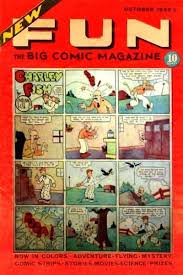
During this first year of the magazines in 1935, there were artists and writers who came and went and more than likely simply submitted material as they did in many other publishers’ offices. During the Depression everyone was looking for work and chasing down all possibilities. Older established artists contributed to this first series and several continued throughout the Major’s era and we’ll pick up with them in the 1936 series.
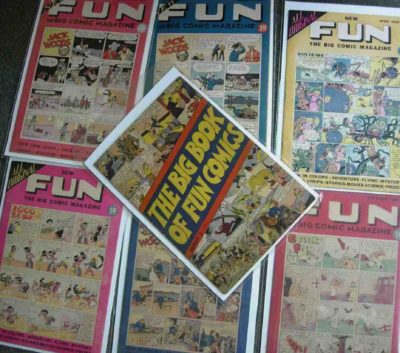
From Jon Berk collection.
(Roy) Leighton Budd, one of the older established artists who had occasional work in the New Fun series contributed a reprint of his comic “Midsummer Day’s Dream” and a two-part non-fiction comic, “Man’s Inventions” in New Fun #4 and 5. “Man’s Inventions” was depicted in a classical manner with no dialogue and information at the bottom of the panel. Budd attended the Arts Students League after working for the Elyria Reporter newspaper in Elyria, OH. He had a long career as an artist and illustrator beginning with The New York Herald in 1894.
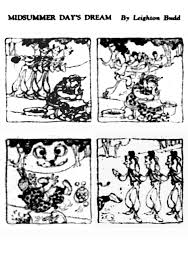 Ed (Edward McMurty) Stevenson, one of the many artists and writers connected to the pulps illustrated “Barry O’Neill” in New Fun #3 and may have illustrated “Sandra of the Secret Service” in the same issue. His work is sophisticated with fluid expressive lines. Stevenson had a long career illustrating for pulp magazines such as Western Story and for the Saturday Evening Post. He was a fine artist having also studied at the Art Students League in New York.
Ed (Edward McMurty) Stevenson, one of the many artists and writers connected to the pulps illustrated “Barry O’Neill” in New Fun #3 and may have illustrated “Sandra of the Secret Service” in the same issue. His work is sophisticated with fluid expressive lines. Stevenson had a long career illustrating for pulp magazines such as Western Story and for the Saturday Evening Post. He was a fine artist having also studied at the Art Students League in New York.
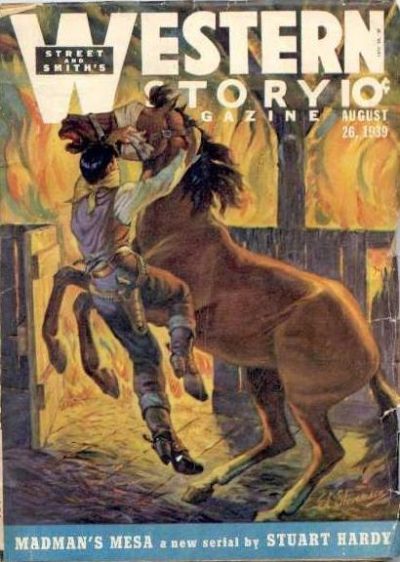
There’s not a lot of information about Henry Muheim who, according to information from Alex Jay’s research graduated from the Providence School of Design and worked for the New York Telegram. Muheim was a cartoonist for the Florida Metropolis of Jacksonville around 1915. He contributed “Loafer the Wolf” and “Frank of the Frontier” to New Fun #6. The comic is stereotypical brave frontiersman against savage Indian and like so many of the older artists, his work is more illustrative. Muheim illustrated a number of children’s books and Denny, the Ace Detective published in 1938.

The younger artists who began to contribute to New Fun had a cartoon style with strong definitive lines. Whitney Ellsworth’s continuing comics “Little Linda” and “Sonny” and “Vincent Sullivan’s “Pincus” and “Spike Spaulding” are a contrast to the more illustrative comics. “Little Linda” is a particularly interesting comic with a storyline that reflects a spunky young girl who faces the difficulties of the Great Depression. Ellsworth and Sullivan’s storytelling fits well with the illustrations and is more highly developed than some of the other comics. It’s unfortunate that Sullivan’s character Pincus is the worst possible racial stereotyping in the way he is drawn and speaks.

To be able to read through New Fun #1-#6 provides the reader with a sense of how the magazine evolved indicated partially by the readers’ letters and drawings that began to appear in the Fun Mail section and the stories and features that were continued or dropped. David Saunders, whose research on pulps and distribution is invaluable, noted to me that he believes one of the Major’s interests was creating a newspaper syndicate and New Fun #1 does have that appearance. It’s a mash-up of a comics magazine, a syndicated news magazine with pulp aspects including stories. The Major’s adventure story “Shavetail” appeared in New Fun #5 and 6 with the original illustrations by V. E. Pyles from Adventure, September 15, 1930.

Pyles was a prolific illustrator for the pulps and illustrated many of the Major’s adventure stories. His grandniece, whom I interviewed over 10 years ago told me that during WWI Pyles was believed to be dead on the battlefield in France and his body was taken to the mortuary tent. It was not well-covered and Pyles awoke to rain dripping on his face!
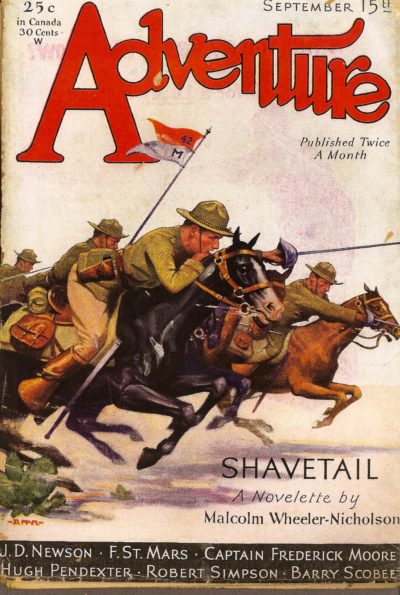
Among other things, focusing on the readers’ suggestions helped to change the look and content of the magazines. By New Fun #6 some of the features were no longer a part of the magazine. “In the Movies” and “On the Radio” was now on one page instead of two and the detailed features for making models of ships and airplanes was gone with activities mostly featured on a page that had a theme such as puzzles. The features “Aviation,” “Popular Science” and “Young Homemakers” were all dropped by New Fun #6. With Lloyd Jacquet no longer editor, perhaps he may have helped to promote these features and/or wrote some of them.
One of my favorite comics that ran from New Fun #1-6 is Tom McNamara’s “After School.” The characters, Lefty, Lefty’s “uncle,” a rather snarky toddler whom only Lefty can understand and Lefty’s pal/nemesis Slimsy are quirky and the offbeat humor could be in any modern comic. At times I laughed out loud. Not bad for an 85-year-old comic. It’s unfortunate that the last comic in the series features stereotyping with blackface. Alex Jay, one of my go to guys for his outstanding research has a post on Tom McNamara on Stripper’s Guide, which you can read here. McNamara had a long career in the arts including a vaudeville act and he wrote scripts for “Our Gang.” You can see that influence in “After School.” McNamara’s work in comics was prolific for DC, Harvey, Comics Magazine and Harry Abrams. However, at the end of his life he was living in San Francisco in a Tenderloin hotel. I have suspected him to be the person that revealed information about what happened to the Major in the forced bankruptcy including the “cooking the books” stories. He fits the description that was given to me by a comics historian who would not reveal his name but provided enough clues that I’m pretty sure it was McNamara who the historian interviewed. Why the secrecy? Fear of reprisal was what I was told.
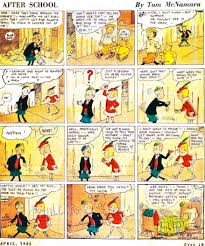
The masthead for New Fun #6 also listed McNamara as cartoon editor instead of Dick Loederer. There was a fond farewell to Loederer with a photo in “Fun Mail” in New Fun #6 that I’m certain was written by MWN. After going through the New Funs it became clear that Loederer was very much hands on. His artwork is throughout–on the headers for all the features, as an illustrator for various pages with his LOE, as an artist for a number of the fillers with by “Rich” and as a creator of the Fun Gnome, and several comics, “Caveman Capers,” and “Bubby and Beevil.” The comic “Brad Hardy” that is credited to Loederer follows a typical story line from adventure stories MWN wrote about Mongolia and Tibet. “Midshipman Dewey” by “RAL” is his as well—Richard A. Loederer. I also suspect Loederer drew Pelion and Ossa for several of the magazines as those characters appeared on the opening page of New Fun #1. It was obvious from the positive depiction of Loederer in New Fun #6 that the Major more than appreciated his contributions and they seem to have parted on good terms.
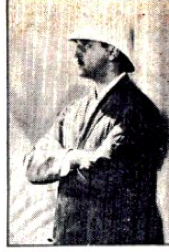
“Pelion and Ossa” is an interesting idea for a comic. One of the early mistakes I made having not seen these comics was confusing it with “The Magic Crystal of History.” Pelion and Ossa are two mountains in Greece that figure prominently in Greek mythology and culture. In the New Funs, Pelion is a penguin and Ossa is a polar bear. In New Fun #1, the comic was supposedly by “Kevin,” unsigned in New Fun 2, “Kevin” is again credited in New Fun #3, then John Lindermayr in New Fun #4 and 5 and finally Al Stahl in New Fun #6. The first 5 representations of the comic seem somewhat similar so it’s possible John Lindermayr did them all. By New Fun #6 with Al Stahl the artwork is clearly his and not similar to those that preceded. It’s a mystery.
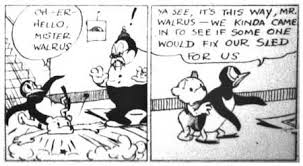
The masthead for New Fun #5 listed Connie Naar as Assistant Editor and she was listed again in New Fun #6 with William L. Cook as Managing Editor. I have absolutely no proof–you can chalk this up to a long life of having worked as an “assistant” for various male bosses–but my intuition tells me Connie Naar was doing a lot and probably writing a number of the unattributed features. Naar began contributing to the Brooklyn Eagle in the early 1920’s so it seems obvious that at age 42 in 1935 she was a seasoned professional. David Saunders has a bio of her on his site, which you can read here. She contributed the page “Junior Funsters” for New Fun #5 and 6 and did the illustrations and holds the distinction of being the first woman editor for DC as well as the first woman illustrator/artist. Naar came from a family who owned newspapers and she began her working life on her father’s newspaper The Daily True American. She continued her career in publishing and as a painter and illustrator.

The other two people listed on the masthead in New Fun #6 were H.D. Cushing as Advertising Manager and Rexford L. May as Circulation Manager. There is little history of what role Cushing played or how active he was in the magazines but Rex May’s signature was on large ads in the magazines encouraging subscriptions and other giveaways and promotions. There was obviously a concerted effort to encourage readership with the radio show connections and various promotional giveaways, contests and prizes.
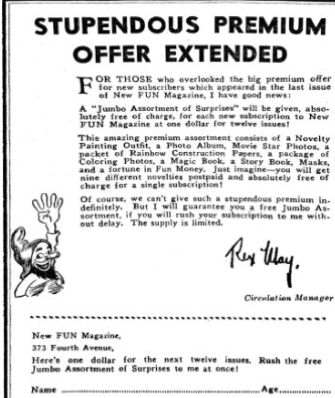
One of the promotions involved buttons for the New Fun Club. Aunt Marianne, who would have been about 12 at the time, told me that they used to sit at the kitchen table and open envelopes that had quarters in them and then put the buttons in the envelopes to be mailed out. She recalled going to the post office with the Major to mail these out to children who had sent in for them. She remembered these as “Superman” buttons but in fact they were most likely the rare buttons for the Fun Club and they were a dime. Jon Berks’ phenomenal collection included one of these buttons.
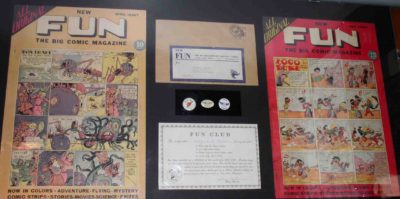
The big event in New Fun #6 was the first appearance of Siegel and Shuster and it heralded many of the changes that were ahead. They submitted several ideas for comics in April 1935 to the Major soon after New Fun hit the newsstands in January 1935. The Major wrote to Jerry Siegel on June 6, 1935 and said they would take “Henri Duval” and “Dr. Occult.” The Henri Duval strip is not as well executed as the Dr. Occult but both have a vibrancy and originality that stands out among the other contributions. It’s not surprising that the Major saw that. The through line in the Henri Duval story is somewhat unclear but Joe Shuster’s beautiful artwork is there from the very beginning. The Dr. Occult story is a tad sophomoric but fun and the artwork is superior. What’s great about seeing this initial work is being able to see the development of Siegel and Shuster as creators. The boys from Cleveland had made it into print and were on their way.

New Fun #6 was the last of the tabloid versions of the comic magazines. Changes were happening in the management and financing of the magazines as well as the shape and content. Sometime in August or September the offices were moved from 49 West 45th Street to 373 Fourth Avenue, coincidentally, the same building from which, the Major published his early newspaper syndicate. Todd Klein has several in-depth posts on the history of the offices of DC Comics beginning with those of the Major. You can find it here.
The Big Book of Comics, the first DC anthology would appear a month later in your “local 5 and dime” on October 11, 1935 followed by New Comics #1 on November 12, 1935 and More Fun #7 on December 13, 1935. 1935 was quite a year for the beginning of modern comics. There’s more to come. Stay tuned.
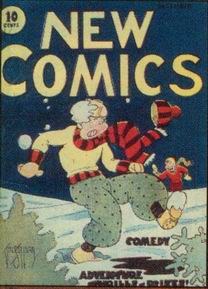
Special thanks to David Saunders, Alex Jay, Todd Klein, Tom Andrae, David Armstrong, Ed Hulse, John Locke, Laurie Powers, and the MWN group with Michael Uslan, Robert Beerbohm, Doc DC, Lionel English, Ray Bottoroff among many others for their expertise and love of these comics and pulps. I couldn’t do this work without them.
